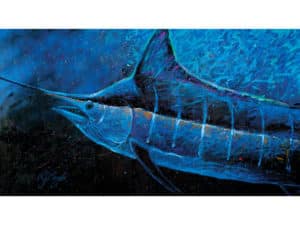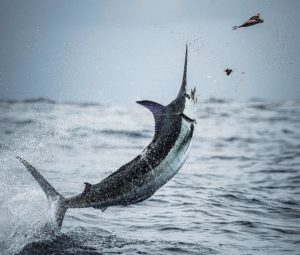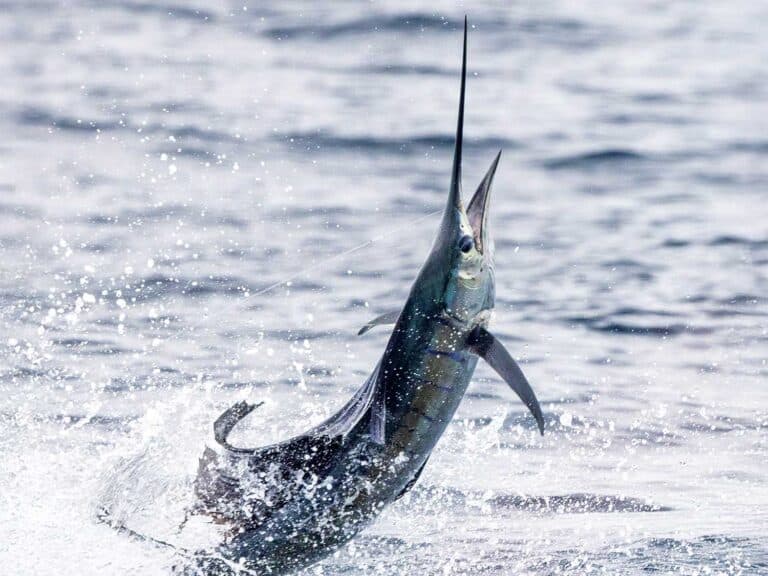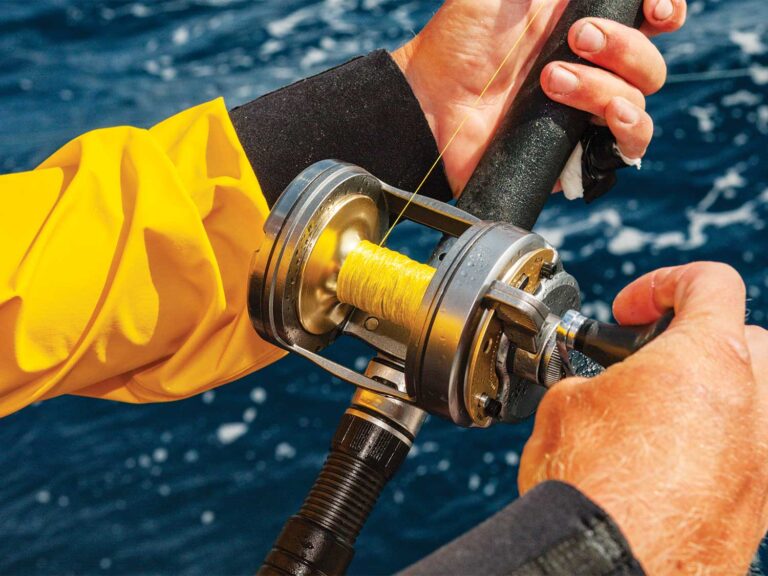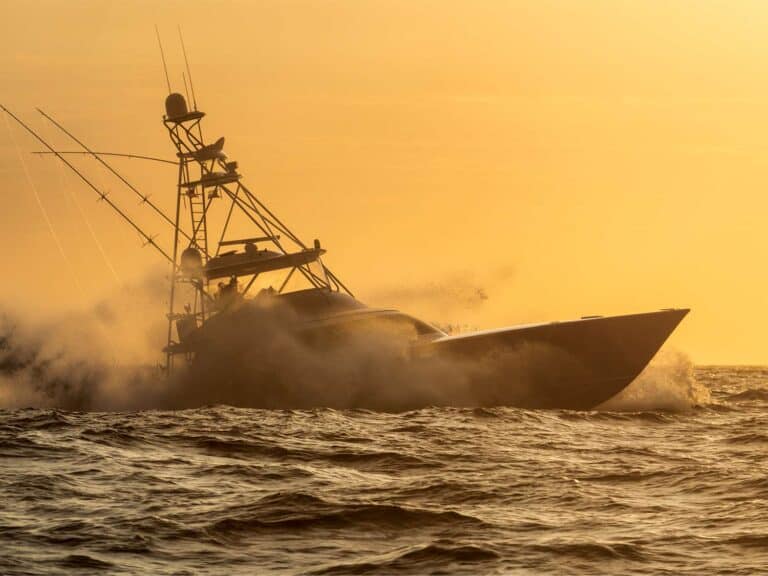
cons0715
Whenever I check out the fish counter in the local seafood market or grocery store, I am struck by not only the names of the fish for sale, but more so the fact that almost all of the seafood products are imported from countries like Mexico, Peru and Ecuador. It’s hard to blame grocery stores — even those that pride themselves on providing sustainable seafood — for offering cheaper imported alternatives to customers, but the lack of domestic seafood readily available is alarming. Like most of you, I am a self-proclaimed “seafood snob,” but when you’ve tasted tuna and mahimahi minutes after it hits the deck, a piece of freezer-burned seafood caught weeks before and imported to the local store just doesn’t do the trick. Despite how much we all like fresh seafood, there is a disconnect when it comes to domestic seafood production, management of international fisheries and, ultimately, the sustainability of the resource.
Hearing the words “longline” or “commercial fishermen” in U.S. waters often makes an angler’s blood start to boil, and over the years, a hard line between commercial and recreational fishing has been drawn. Does it have to be that way? The long and historic commercial versus recreational mindset is something that most of us would defend wholeheartedly, but a recent trip for a fisheries meeting in Washington, D.C. reconfirmed my thoughts on an article I wrote a couple years ago called “Will It Be Bye Bye Miss American Pie?” [August/September 2012]. The article addressed the need of the United States to catch its allocated quota of internationally managed fish, such as swordfish and tuna, or fear losing some quota to other countries that do not fish with the same conservation-minded regulations U.S. commercial fishermen must fish under.
Instead of continuing the historical trend in which one side is constantly out to get the other, there might actually be more common ground between recreational and commercial fishermen than one might think: simply wanting the opportunity to fish. Whether we are talking red snapper in the Gulf of Mexico, bluefin tuna off the Pacific coast of Mexico or swordfish in the Atlantic, both groups want their share of the proverbial pie. Anglers fish for sheer enjoyment, filling the cooler and putting a meal on the table, or the chance of catching the fish of a lifetime and winning a big tournament; commercial fishermen desire to put fish on the dock to provide domestic catch for the market and ultimately make a profit.
Since I wrote that article, the National Marine Fisheries Service finalized two important decisions for swordfish and bluefin tuna management — Amendments 7 and 8 — in hopes of increasing fishing opportunities for U.S. fishermen. At the same time, they hoped to increase accountability among the different sectors and ultimately decrease the amount of dead discards. But even with these large-scale changes in management, the United States still failed to come close to catching its 2014 swordfish quota, and only time will tell if bluefin discards will decrease and harvests will be met with new measures implemented this year.
Despite the recent changes, those on the commercial side — particularly longliners — continue to argue they are being choked out of existence by regulations that will ultimately leave them tied to the dock. Just like a boxer backed into a corner, the defense mechanism is to look for any possible options to stay in business. Subsequently, the longliners are investigating the possibility of opening up the closed zones that were established in 2000 on the Charleston Bump and along the Florida East Coast zone to protect juvenile swordfish and reduce bycatch of billfish. This is something the recreational community does not want because of the documented reduction in bycatch and the banner days many of us have had for both swordfish catches and billfish releases over the last 15 years.
The longline fleet has stated that closed zones, adamantly opposed by the recreational community during the formation of Amendment 7, are forcing them to fish in areas with higher bluefin tuna, juvenile swordfish and marlin interactions, thus increasing the levels of bycatch instead of reducing it. Looking strictly at the numbers, I asked one of the pelagic longline vessel owners why bycatch for marlin and sailfish decreased by as much as 70 percent since the implementation of the closed zones if, in fact, they were encountering more billfish outside of these areas. I was provided with the blunt and discomforting answer that those fish are simply not being documented by many of the U.S. longliners, treated as if they were never caught.
Compounded with limited observer coverage, this not only creates artificially deflated numbers but an even greater mistrust in the numbers reported by the commercial sector. On top of that, the longline fleet is actually shooting themselves in the foot if they are not reporting the bycatch of billfish caught outside of the closed zones. If they kept clean records, they would have been able to prove this bycatch exists, subsequently supporting their case to open the closed zones. However, that’s not my side of the argument.
It is also hard for me to believe that opening the closed zones would be the silver bullet in solving the under-harvesting issue of swordfish and tuna by the U.S. fleet. With several other factors at play and the fact that existing commercial permit holders opposed allowing new participants in the swordfish fishery in South Florida, significant and convincing data would be needed. There are certainly members of the recreational community who understand the overall stake for the United States at international negotiations and would have open ears should this data exist. However, the only scientific study looking at catch rates inside and outside of the closed zones was never finalized because of funding, leaving necessary questions unanswered.
Yet, with the ever-increasing amount of imported seafood in the United States (2.5 billion metric tons in 2013), and an understanding of the constant -pressure from international markets on U.S. fishermen, it is important to keep an open mind when decisions like this occur. It certainly is tough to wrap your head around the “best for the United States” mentality, but increasing opportunities for U.S. commercial fishermen not only provide domestic jobs and help battle the eroding working waterfronts along our coasts, they also protect the supply chain by offering domestically caught seafood to consumers. On the other hand, and perhaps nearer to your heart as an angler, you don’t want to support decisions that could have negative impacts on the recreational industry.
While it is important to take into consideration the perspective of the U.S. commercial fishermen as we move forward, easy solutions don’t exist. Over the next several years, with new management decisions and revisiting the effectiveness of those already in place, increased cooperation among the sectors is pertinent. We must remember that, at the end of the day, we are all striving to increase fishing opportunities for all U.S. fishermen_._ Given the highly migratory nature of the billfish, tuna and swordfish that we all love to catch, we’d better take care of them while they are here.
